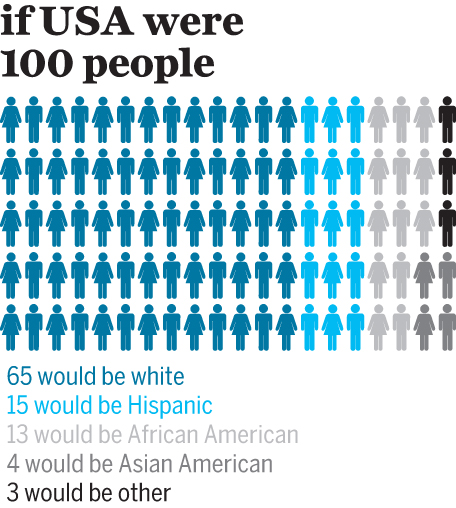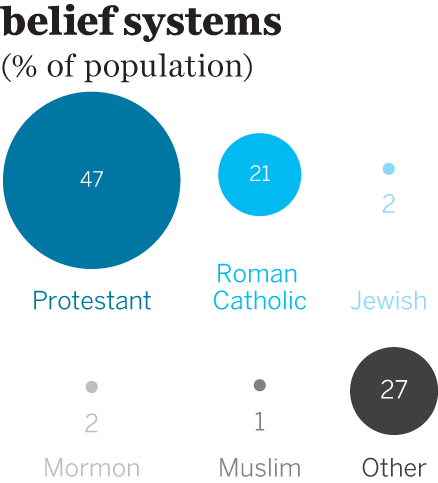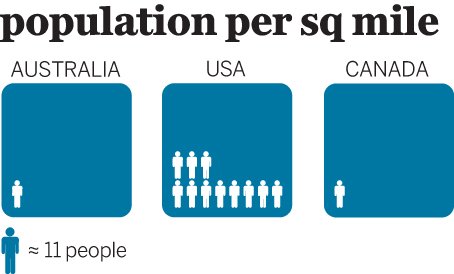USA Today
The controversial result of the 2016 election, which saw businessman Donald Trump lose the popular vote but win the presidency, thrust the US into an uncertain future, dividing the nation across hot-topic issues such as immigration and health care, and sparking waves of protests, with those on the left resisting the nation’s sudden (and sharp) turn to the right. Meanwhile, recreational marijuana gains increasing acceptance, cities blossom, and the divide between rich and poor grows ever wider.
Best on Film
Singin' in the Rain (1952) Among the best in the era of musicals, with an exuberant Gene Kelly and a timeless score.
Annie Hall (1977) Woody Allen's brilliant romantic comedy, with New York City playing a starring role.
North by Northwest (1959) Alfred Hitchcock thriller with Cary Grant on the run across America.
The Godfather (1972–90) Famed trilogy looking at American society through the lens of immigrants and organized crime.
Boyhood (2014) Richard Linklater's coming-of-age tale, shot over the course of 12 years.
Best in Print
On the Road (Jack Kerouac; 1957) A journey through post–WWII America.
The Great Gatsby (F Scott Fitzgerald; 1925) A powerful Jazz Age novel.
Beloved (Toni Morrison; 1987) A Pulitzer Prize–winning novel set during the post–Civil War years.
The Adventures of Huckleberry Finn (Mark Twain; 1884) A moving tale of journey and self-discovery.
Blue Highways (William Least Heat-Moon; 1982) A classic of American travel writing.
The Underground Railroad (Colson Whitehead; 2016) Pulitzer Prize–winning novel chronicling a young slave's bid for freedom.
Underworld (Don DeLillo; 1997) A probing look at life in late 20th-century America.
Changing Cityscapes
Cities are booming in America, growing at a faster rate than the rest of the country. Far from being the burned-out hulls of decades past, American cities are safer, and have wide-ranging appeal (in the realms of culture, food, nightlife and livability). Yet with more people moving from the suburbs and the exurbs to city centers, this has brought many challenges – particularly in terms of housing and transportation. Creating affordable housing is one of the biggest challenges facing American cities. In many places rent and housing prices have skyrocketed. In particular, middle-class families – whose incomes aren't rising fast enough to meet the price increases – are feeling the pinch. Nationally, more than half of all renters are spending over 30% of their income on rent. And low-income families spend more than half their income on rent. To meet the growing demand, housing units are being built across the country, though often these new units cater to the luxury market, doing little to diminish demand. Some mayors, such as Bill de Blasio of New York City and Ed Lee of San Francisco, have launched ambitious programs to create more affordable housing. De Blasio stated that unless New York acted boldly, the city risked becoming a gated community of exclusivity rather than opportunity. The same could be said for many American cities.
A Divided Nation
Speaking of exclusivity, the income gap continues to widen in the US. The top 1% of the population earns more than 20% of the income (up from 9% in 1976). Meanwhile, the poor are getting poorer: the median wage earner takes home 2.5% less than in 1999. Unfortunately, it isn't just the income gap that is widening. Rich people in America are living longer than poor people: the wealthy lived 2.7 years longer than the poor in the 1980s. Today, the life expectancy gap between the richest and poorest Americans has ballooned to 15 years. And privileged children are outpacing their peers by bigger margins (the gap in test scores between rich and poor is over 30% wider than it was two decades ago). The challenge: how to fix the problem. A potential solution – raising taxes on the rich – is considered political suicide, and both strengthening unions and creating universal pre-kindergarten programs have received little traction in the current political climate. There is one silver lining: states from California and Washington across to New York plan to raise minimum wages to as high as $15 in the coming years in an attempt to lift their poorest citizens out of poverty.
Best in Music
America (Simon & Garfunkel; 1968) Young lovers hitchhiking in search of America.
Cowboy Take Me Away (Dixie Chicks; 1999) Classic country music at its best.
Smells Like Teen Spirit (Nirvana; 1991) The Gen-X grunge-rock anthem.
Gangsta's Paradise (Coolio; 1995) A hip-hop classic lamenting the cyclical nature of violence.
Born This Way (Lady Gaga; 2011) A gay anthem for a new era in LGBT rights.
Alright (Kendrick Lamar; 2015) The song against injustice chanted at Black Lives Matter protests.
Greenest Cities
Portland, OR Huge parks, 350 miles of bike lanes, a walkable city center and an eco-mad populace.
San Francisco, CA Abundant green markets, organic restaurants and ecofriendly buildings. Biking, walking and public transit rule.
New York City, NY Bike-sharing programs, waterfront parks and green spaces, with 100,000 trees planted each year. Plus no need for a car – ever.
Minneapolis, MN The fourth-largest bike-sharing program in the nation, a wildly successful green roofs initiative and 15% of total area reserved for parks.
Greener Futures
With more people moving to urban areas, cities have also grappled with transportation. Building more roads has never helped alleviate traffic congestion – as engineers have known since the 1960s. The answer has been greater investment in public transit. Cities, once deeply married to the automobile (Houston, we're looking at you), have greatly expanded public transportation options, with new light-rail lines, express bus lanes and dedicated bus lanes. Bike-sharing programs have also exploded across the country, with nearly 120 cities offering easy rental (usually by the day and week) for residents and visitors. The benefits – fewer cars on the streets, a bit of exercise for commuters, less carbon in the atmosphere – are obvious, though critics worry about injuries (since no bike-sharing programs provide helmets), as well as the long-term financial viability of these often expensive programs.
Gun Culture
In the USA there have been scores of mass shootings over the past 30 years, and sadly the trend has continued with recent high-profile attacks. In 2017, a heavily armed gunman in Las Vegas, NV, fired down on a country music festival from his hotel room on The Strip, killing 58 people, while in 2016 a man opened fire on a LGBT nightclub in Orlando, FL, killing 49 people. Other devastating incidents include the 2015 race-related killing of nine members of a bible study group at an African American Baptist church in Charleston, SC, and the 2012 Newtown, CT, massacre, which claimed the lives of 20 young children and six adults. On average, 32 Americans are murdered by people with firearms every day and another 216 are wounded. Add to this accidental shootings and suicides and some 34,000 Americans are killed each year by guns. Despite evidence (including a 2013 study published in the American Journal of Medicine) that more guns equals more murders, and the comparatively low rates of death by firearms in countries with strict gun laws, American legislators have been unwilling to enact even modest gun-control laws. The reason in part: gun lobbies such as the National Rifle Association (NRA) wield incredible power, contributing over $35 million annually to state and national political campaigns. But Americans are also enamored of their guns: a recent Pew Research poll found that 52% of Americans said it was more important to protect the right of Americans to own guns versus 46% who said that it was more important to control gun ownership (ie have stricter hand-gun laws).
The 'Green Rush'
Only 32% of Americans favored legalizing marijuana for recreational use in 2006. Today, that figure is fast approaching 60%. Attitudes toward the drug have changed dramatically over the past decade, thanks in no small part to Colorado, which legalized recreational use for adults aged 21 and older in 2012 and went on to develop the nation’s first true cannabis industry, with pot shops, weed tours and cannabis-friendly lodgings. While the drug remains illegal under federal law, one in five Americans now lives in a state where it’s considered legal to smoke marijuana without a doctor’s prescription. Meanwhile, the weed industry is in the midst of a so-called ‘green rush,’ with legal sales expected to surpass $20 billion by 2021. Proponents of the movement say it’s an economic boon that takes money out of the hands of drug cartels and puts it to good use as tax revenue. Opponents argue that legalization normalizes drug use, spurs dependency and can have adverse effects on teens and impoverished communities. The debate rages on. Meanwhile, new states legalize the drug each year and the federal government turns a blind eye.
Population
324 million
GDP Per Capita
$57,300
Unemployment
4.8%
Population Below the Poverty Line
14.5%


